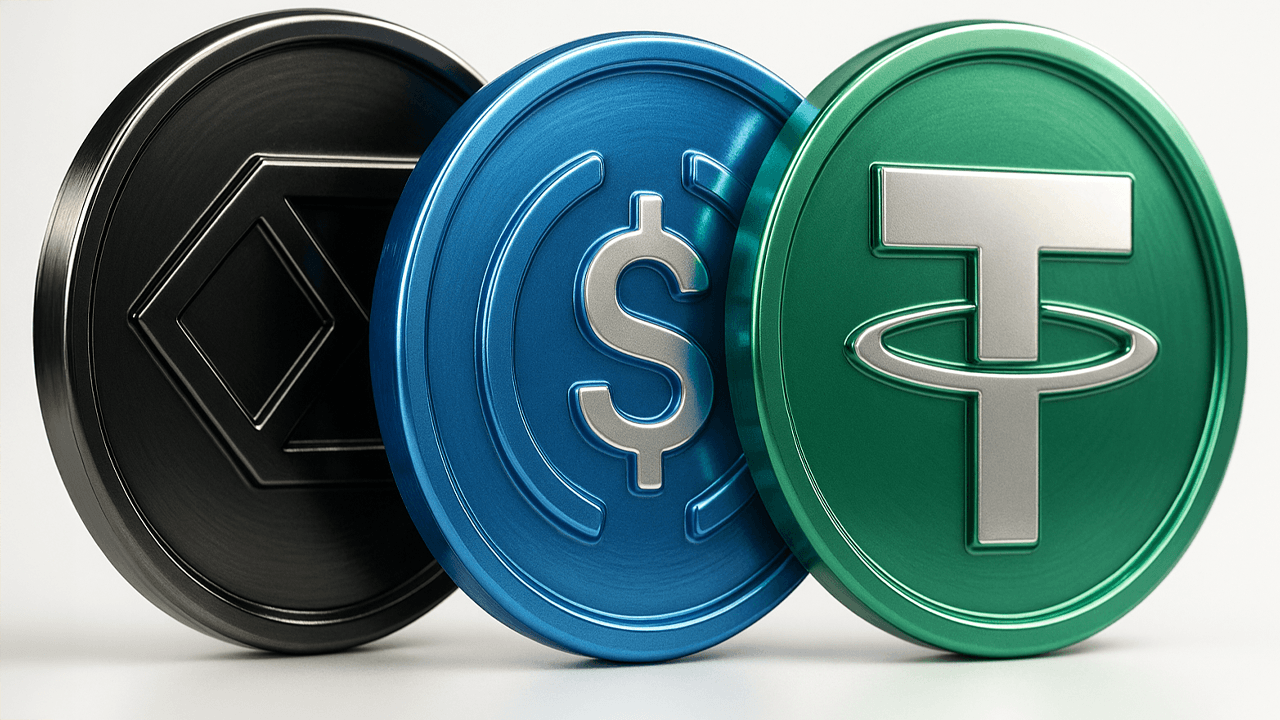Stablecoins are continuously proving themselves as a strong instrument in the world’s financial scene: they combine the best of fiat money's security and cryptocurrency's irrelevance. Stablecoins, unlike the more volatile digital assets Bitcoin or Ethereum, are pegged to other, more stable assets, most frequently the dollar, and promise faster, cheaper, and easier-to-access transactions. They have found success so far in categories like remittances and e-commerce, but their value in online education is just starting to take shape.
Though official statistics on stablecoin payments adoption in education—specifically related to tuition, micro-scholarships, or educator monetization —are currently scarce, the use cases and associated financial benefits point to a giant opportunity on the horizon. With the growing inclusion in cross-border education and remote learning, stablecoins can likely be the backbone of blockchain-powered student payments globally.
Why Stablecoins Make Sense for Online Education:-
The inefficiencies of the existing systems are one of the strongest cases for crypto payments for online education. Conventional payment systems are costly, slow, and sometimes inaccessible, especially for international students or underprivileged families in developing countries.
- Lower Transaction Costs:
The typical worldwide fee for sending a meager $200 is 6.35%. These fees have an outsize impact on students paying small, repeat payments for online coaching or course subscriptions. On the other hand, taking stablecoin tuition payments can reduce that fee to as little as 0.5%–3%, enabling both the institutions and the students to save quite a bit. These savings extend to teachers who would normally sacrifice up to a portion of their earnings to platform fees, payment processors, or foreign exchange fees.
- Faster Settlements:
And while international bank transfers can take days to clear, stablecoin transactions — enabled by blockchains like Ethereum or Solana — can settle in minutes, or even seconds. For institutions, that translates to faster access to working capital. For students and scholars, the implications are immediate scheduling of funds for pressing education expenses.
- Financial Inclusion:
Stablecoins allow for easy access to global education payments, making them particularly useful in countries with poor financial infrastructure. And those apps let anyone with a smartphone and an internet connection in places like Sub-Saharan Africa or Latin America access USDC or USDT, no bank account needed. For Argentina, for example, there are platforms like Buenbit and Lemon, which allow users to convert their pesos into USDC, thereby allowing families to save or spend for tuition in a more stable currency.
Use Cases: Tuition, Scholarships, and Incentivized Learning
There are also a couple of use cases that you should know of, even though most people haven’t adopted them widely yet.
Tuition Payments:
Bentley University in 2022 became one of the first accredited United States’ schools to begin accepting stablecoins, including USD Coin (USDC), as payment for tuition. With the Coinbase collaboration, students could pay tuition using Bitcoin, Ether, or USDC—an indication of the university’s proactive approach to providing education for a blockchain-based future.
Micro-Scholarships and Rewards:
New models are being created in which stablecoins are employed to encourage learning. Students could be given micro-scholarships of crypto as small rewards for things like regular attendance or raising their grades. These points could be cashed in for additional coaching, exclusive workshops, or real money. With micro-scholarships in stablecoins as a reality or near future possibility, edtech platforms could hook into the smart contract to automate and verify the reward.
Also read: Stablecoin Payments in Corporate Payroll: Reducing FX Costs for Global Teams
Monetizing Education: Enabling Creators and Coaches
The creator economy is a cornerstone of contemporary online education and has led to things like YouTube educators, solo course creators and freelance tutors. Conventional payment options can be cumbersome : delays in payment, exorbitant fees or regional limitations. Stablecoins provide an alternative: fast, final and global.
Direct, Real-Time Payouts:
Through stablecoins like USDC, educators could accept payments directly from students, without middlemen like banks or Stripe taking a cut. This is a peer-to-peer model that minimizes friction and fees. Platforms like Audius, for example, utilize USDC to automate payments to music artists — this kind of infrastructure could also support decentralized education payments for tutors and content creators.
Product Integration – Transfi-powered:
Transfi’s international crypto payout network allows edtech companies to send instantaneous, borderless, stablecoin payments to creators, freelancers, and/or employees. Monetize educational content with stablecoins Seamlessly offer platform learners the ability to pay using stablecoins with recurring payouts, FX conversion and KYC/AML out of the box. Transfi is there to be the operational rails for platforms that want to pay creators out in stablecoins.
Reduced Intermediary Risk:
Transactions are final and can't be reversed, eliminating chargebacks for merchants and reducing fraud. That provides comfort to creators who would otherwise be unsure of whether they will be compensated or not when they use traditional payment processors that have the ability to freeze and reverse funds.
Challenges and Friction Points
But even with this potential, education payments with stablecoins have regulatory and technical challenges to address before it can be embraced.
Regulatory Ambiguity:
The laws regarding crypto vary widely by country. Some jurisdictions, such as the European Union (through the MiCA) and Singapore, have proposed stablecoin specific regimes. In the U.S., bills like Clarity for Payment Stablecoins Act are still being debated. Without coordinated international standards, transnational education is still a tricky game.
User Experience Barriers:
The process of managing wallets, gas fees and interacting with the blockchain is still scary for the average student and teacher. The overall user-friendliness is in process with smart wallets and gasless transactions to come.
Liquidity and Ecosystem Fragmentation:
The stablecoins are issued on different blockchains — Ethereum, Solana, Avalanche — and the liquidity can be fragmented. When it comes to bridging assets between the chains, the risk and cost is added, making unable the smoothness of payment.
Looking Ahead: The Ecosystem is Growing
Adding stablecoin grant-based scholarships for all students around the world is becoming more feasible as regulations are clarified and tooling is polished. Future developments may include:
- Pre-funded digital wallets for students in underbanked areas
- Smart contract based automatic distribution of scholarship
- Education-rewarding subscription models with cryptohintos as micro-incentives.
- Payment-anchored, blockchain-based credentials
Platforms that have digitally denominated dollar payouts for creators in education can provide a more efficient cost structure, they can give creators payouts in days instead of months — to anywhere in the world. They are rethinking the way that we fund online education and deliver it.
Also read: Stablecoin Payments in Brazil: Connecting Pix, USDC, and the Global Digital Dollar System
Conclusion:
The ascendancy of stablecoin payments in education signals a tectonic shift in learning finance. Whether through USDC for tuition and scholarships, creator monetization using crypto, or funding micro-scholarships in the form of stablecoins, the possibilities are growing fast.
Platforms such as Transfi are making it easier for institutions and teachers to get on board this future. Regulation is firming up and usability is getting better, stablecoins may soon become the go-to way to both play and get paid in online education.
FAQs:
- Is it possible to use USDC (stablecoins specifically) for online education?
Yes. Some institutions including Bentley University already accept USDC. Several digital outlets are experimenting with payment systems in cryptocurrencies.
- Are transactions with stablecoins safe for educational platforms?
Yes. Unlike a private stable coin, stable coins are on secure public chains and one can layer in custody or conversion between chains in order to deal with any risk or compliance concerns.
- What role do stablecoins play in student financial inclusion?
They offer a way for students who do not have credit cards or bank accounts to pay for courses with just a smartphone and an internet connection.
- Is it possible for Educreators to receive payment in stable coins?
Absolutely. Huge amounts of platforms are discovering the payout of creators through stablecoins, which is faster, global and generally cheaper than doing so with intermediaries.
- Any platform where we can convert the stablecoin tuition in INR or local currency?
Yes. Platfi’s offerings include TransFi, which enables businesses to receive stablecoins and automatically convert them into local currency without facing volatility.
Daftar Isi
Artikel yang Disarankan
Jelajahi produk kami

Lakukan pembayaran global dengan kecepatan klik

Terima pembayaran, hapus batas.

Buka Transaksi Mata Uang Digital yang Mulus Di Mana Saja








.png)














